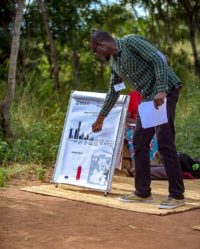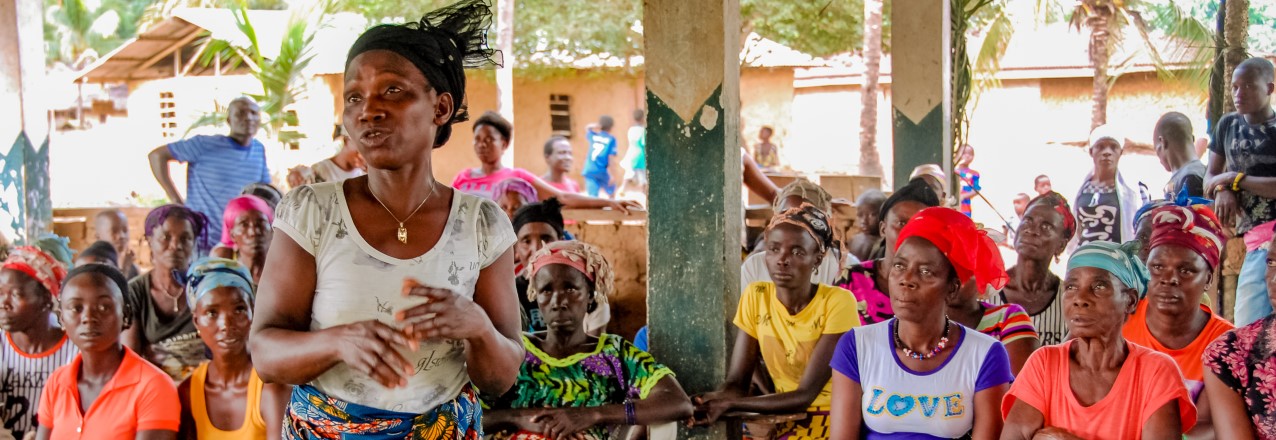
Enumerator from RuralNet discusses findings with a community from the TGCC Impact Evaluation. Credit: Inzy Media.
International development evaluations, especially rigorous impact evaluations, rely on local communities and thousands of respondents to generously contribute time and knowledge for the collection of several rounds of survey data. Each survey also involves significant support from community members who assist in bringing the research team into the community and facilitating connections with respondents.
However, these communities and respondents rarely experience direct or tangible benefits from participating in the research process. It can be ‘extractive’ from the standpoint of the study population if they never learn about the insights gleaned from the research they made possible and how those insights may help them. Communities are likely to find some analyses informative and helpful in their own development efforts, such as strengthening their individual and communal rights.
To this end, Cloudburst designed two Getting Data Back to Communities efforts with the support of USAID’s Office of Land and Urban to disseminate rigorous evaluation findings back to local project stakeholders, including survey respondents, project beneficiaries and implementers, community leaders and local government officials. This data dissemination methodology includes the first tool of its kind in the land sector that allows evaluators to interactively share findings with study communities.
To present evaluation findings in Liberia and Zambia, Cloudburst drew upon its research and programming expertise to craft protocols that facilitate culturally appropriate learning exercises for rural communities comprised mainly of smallholder farmers with low levels of literacy. The evaluation team supplemented these protocols with an interactive visual aid developed in collaboration with a local artist. These exercises were an opportunity for communities participating in the evaluations to have the chance to learn about themselves, rather than solely focusing on our learning as researchers about communities and interventions.
Facilitators reported participants enjoyed talking about their experience and how it compared to other villages. They liked learning about the data and their own community and recommended conducting similar exercises in the future. These exercises also presented an opportunity for communities to reflect on their accomplishments during the program, and what work they would like to continue to achieve future goals.
Sharing research findings and any resultant policy changes help convert an abstract evaluation into more tangible benefits for participants. At the same time, it strengthens the relationship between the researchers and the study communities by showing a commitment to the participants and encouraging them to be a part of the process beyond initial data collection. These Getting Data Back to the Communities initiatives are one example of the many ways that Cloudburst is supporting communities in the United States and abroad to transform their data into action.
Written by Kate Marple-Cantrell, MA MCP, Evaluation Specialist. Ms. Marple-Cantrell has more than seven years of experience in impact evaluation. At Cloudburst, Ms. Marple-Cantrell supports project management and technical analysis on rigorous mixed methods evaluations of land tenure and housing programs in the United States and abroad. She served as activity manager for the Community Land Protection Program performance evaluation of communal land tenure strengthening activities in Liberia.


Your Comment
Leave a Reply Now